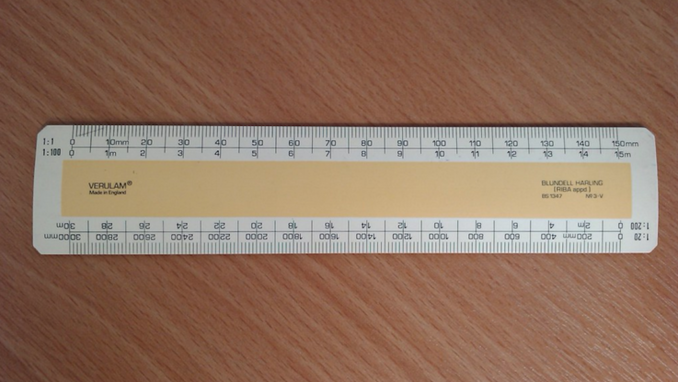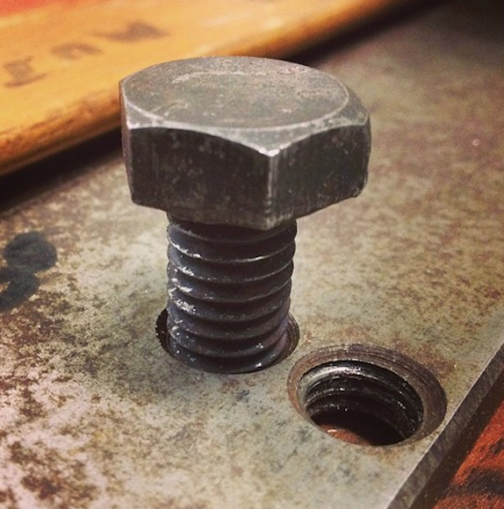I am one of those fortunate people who understand both metric and imperial measurements. I am old enough to have had my early education purely in imperial but as an apprentice my college courses employed both imperial and Metric. When I started work for Babcock and Wilcox Ltd. everything was imperial and all the standards we used were based on imperial measure. By the late 1960s metric measurements were creeping in, which initially simply entailed dual dimensions on drawings and converting the results of calculations into metric. For example, a large piece of equipment would be supplied by a subcontractor and would be accompanied by a data sheet giving the dimensions and weights in imperial. We then convert this sheet into dual measurements.
By the time I took my final college exams (1972 or 3), the education world had decided to go fully metric. If I failed those examinations the following years were to be metric only. Luckily I passed. It was another couple of years before work decided to go fully metric. But this of course led to some ridiculous results. Not only were the items I was drawing now only metric but they now had to be drawn using metric scales. In the imperial days we had a multitude of scales to choose from, ranging from 1/16 inch to the foot to 3 inches to the foot with all sorts in between (1/8”, 1/4”, 1/2”, 3/4”, 1”, 1 1/2” ). We simply picked a scale that best suited how the project fitted on the drawing sheet. But with metric scales, British Standard now recommended we use only, 1:100, 1:50, 1:25 and 1:10. Four scales to replace 8. We did sometimes have to use 1:250 to make the site plan fit on a sheet but it was not a ‘recommended scale’. On top of this little problem, we now had to use metric ‘A’ size drawing sheets the largest of which was A0 (33.1” x 46.8”). We were drawing massive power stations and had previously been able to use Imperial Emperor size sheets (72” x 48”) to draw the plants at a scale that showed enough detail to ensure the plant fitted together. The solution was we had to split the plant drawings into parts to fit on the drawing sheet, not an ideal situation.

Blundell Harling ‘Verulam’ scale rule,
Drac02008 – Licence CC BY-SA 2.0
Now I read that we are going to repeal the EU law that currently enforces this situation and cost companies vast amounts of all those years ago. I started wondering if we are likely to go back to imperial measurements but I really can’t see it as for we now are engrained in the metric system. But then I started thinking about those imperial hangovers we continue to live with and why.
For example, where ever you are in the world a football goal is 24 feet (8 yards) wide x 8 feet high. Even FIFA dare not change this as it is based on the area an average man can defend. What else is an imperial hangover? How about the length of a cricket pitch (22 yards), the length of horse races (miles and furlongs), road distances (miles), speed (miles per hour), milk and beer (pints), ship speeds (knots). I could go on and list many others which I am sure we will carry on using. However there are other, many used around the world that are less obvious.

A Pint of Beer,
Ian T – Licence CC BY-SA 2.0
Going back to my engineering days, worldwide boiler furnaces are constructed from a ‘membrane’ wall of tubes 2 1/2 inches outside diameter on a 3-inch pitch with a solid metal fin welded between them. Even today membrane walls are made from 63.5 mm OD tubes on a 76.2 mm pitch, a simple direct conversion of the old sizes. Why. All the dies, worldwide, were imperial and all the thermodynamic calculations were based on imperial measurements, it was simply too difficult to change the boiler design rules. How about a sheet of plywood? A standard sheet is still 4 feet by 8 feet but its thickness is measured in mm why? However plasterboard has gone metric, a standard board is now 1.2 metres wide by 2.4 metres long. Why did one change but not the other? My guess is money, in the world of private business money is king. No one would be willing to spend the money necessary to go back to imperial measure. Likewise, there is little appetite to get rid of those imperial hangovers like pints of milk. Hence the law being slackened to allow the continue to exist.
Sometimes I miss some of the imperial things that have officially gone, British Standard Whitworth threads for example. The BSW standard was defined by Sir Joseph Whitworth in 1841 and served British industries well for over 100 years. Researching this article I was surprised to find that BSW nuts and bolts are still available for purchase. Officially they are for use on things like vintage cars that were originally built using them. Interestingly the metric replacement for this workhorse bolt is UNC which actually has the same number of threads per inch as BSW. Meaning that to some extent they are interchangeable but a BSW bolt might be a little loose in a UNC threaded hole. Mind it does show just how good a design the BSW system was as, in effect, it is still in use 180 years after it was specified.

It fits!
Kyle Van Horn – Licence CC BY-SA 2.0
The system of measurement used in the United States is often described as imperial units but this is not correct. The British Imperial Weights and Measure Act was passed in 1842 and defined the system of lengths and weights that superseded the ‘Winchester Standard’ that had been in use since 1588. The United States was independent by then and continued to use their own system that is more formally known as ‘The Customary Units of the United States’. Over time there have been some deviation, particularly in liquid measure, from each other, but they have many similarities as they had that common origin.
The vast majority of the world exclusively uses the metric system of weights and measures. Only the UK and Canada use a mixed system but are metric in most things.
The United States has its own version of imperial measure as discussed earlier. Myanmar having spent years in isolation from the rest of the world is slowly adopting the metric system, while Liberia based its constitution on the US constitution and is converting from US imperial to metric. For the simple reason that we nearly have a world system, I doubt we will ever return to our own imperial system. However, I am still 5’ 11” tall, weigh 11 stone and drink pints. I have no intention of personally going metric.
© WorthingGooner 2022



